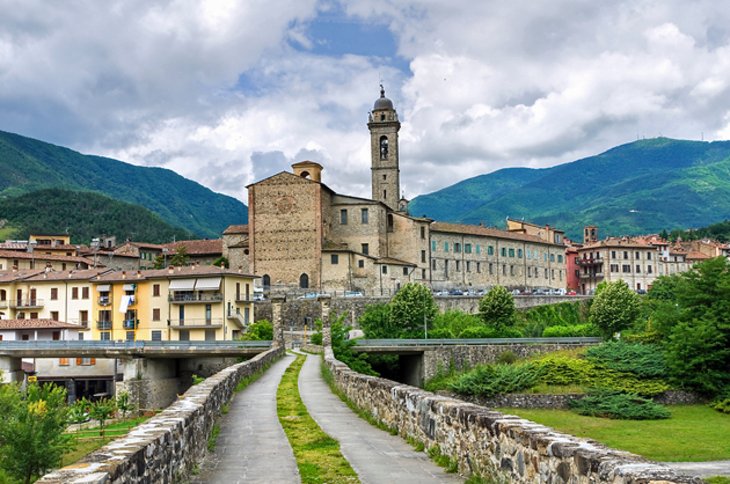 Piacenza
Piacenza
PIACENZA is situated at the end of Via Emilia, on the border with Lombardy. It is a small city with no major aspirations and the local attractions remain in the shadow of the monuments of Parma or Modena (and Cremona in Lombardy - see chapter three); even though there is a small industrial area on the Pada, one gets the impression, that everything is about to grow grass. There are so few travelers here, that while walking through Piazza dei Cavalli they attract attention, especially in the dead lunch time. Most people come here, to eat something, take a look at the famous Fegato di Piacenza - Etruscan bronze liver, fortune telling - and on the road.
Unfortunately, Etruscan liver cannot be seen at present, because the Museo Civico, where it is stored, it has been under renovation for ten years and it is not known, when it opens again. Against, if it was open in an instant, as you read these words, we inform, that fegato is sheep's liver, and the signs on it are the names of Etruscan deities. There are also some paintings in the museum, including works by Botticelli and Mattia Preti, and various medieval weapons.
In Piazza dei Cavalli, in the city center, there are two more famous works in bronze - a pair of horse statues, which is often cited as one of the best baroque sculptures. They were cast at the beginning of the 17th century. by Francesca Mochi, a student of Giambologni, and undoubtedly impress with their dynamic approach to movement. One of the riders is Alessandro Farnese, Philip II of Spain's condotier, and the other is his son Ranuccio I.. Behind the monuments there is a beautiful brick II Gotico, city Hall, built in 1280 r., a distinguished example of Lombard gothic architecture - the building is topped with battlements in the shape of fish tails. The same square also houses the Church of San Francesco from the same period with a striking Gothic interior.
The streets around Piazza dei Cavalli are quiet and mostly residential, with scattered Romanesque and Renaissance churches. Located in a quiet corner of the city at the end of via XX Settembre Duomo, it has been rebuilt many times, since it was built in the years 1122-1233, but the core is clearly visible in the splendid Romanesque Lombard style, and the dome is decorated with frescoes by Guercino.
The nearby church of San Antonio on via Scalabrini is called "I Paradiso" due to the 12th-century reliefs on the portal. A few minutes away is the Galleria Ricci-Oddi with its collections of 19th-century Italian art.
Practical details
Piacenza is considered a foothold of Emilian cuisine for people coming from Piedmont and Lombardy, but the best places are expensive. With a slim wallet, it's best to go to mensa on via Vescovado (12.00-14.30 and 19.00-21.30); with a stuffed pocket you can try the specialties of the Ginetto, which costs a little, but it's worth it.
Accommodation can be found among a group of affordable hotels in front of the train station in Piazza Marconi. The most comfortable is Rangoni at number 1 (* 0523/21778), with doubles after 26750 L; Dawi (* 0523/20823) on the opposite side of the square and Moderno (in 0523/29296) around the corner, at via Tibiui 29-31, are in the same price range. From there it is a few minutes' walk to the EPT, and it is located in Piazetta dei Mercanti, koło Square of Horses (codz. 9.00-12.30 and 16.00-18.00, pn., thurs. i sb. in the afternoon it closed).